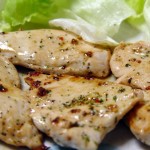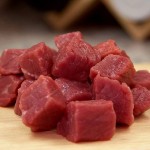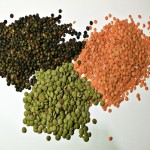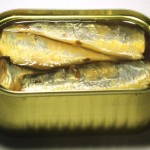By Performance Registered Dietitian, Eric Bockelman
During exercise we constantly challenge our bodies. These increased demands often can cause specific deficiencies that compromise our bodies’ normal processes. One specific and very common level that is often compromised is iron. When this mineral is low it can lead to a condition known as anemia. This is when your body has a significant decrease in the number of red blood cells, more specifically a decrease in the hemoglobin concentration in the blood. Iron plays an important role in this process because it is what binds oxygen for transport in the body. A deficiency in iron can lead to a few symptoms.
There are a few telltale signs that may indicate you are anemic.
- Dizziness
- Insomnia
- Leg cramps
- Thinning hair
- Becoming fatigued easily
Iron levels can be detected from a blood test performed by your family physician.
Risks Factors
As you can imagine, the efficient transport of oxygen within the body is imperative as an athlete. As with many disorders and deficiencies, there are target populations that have greater occurrences than others.
- Female athletes: Typically anemia is more of concern for women than men, due to the fact that women consume fewer calories than men, resulting in a decreased intake of iron-rich foods. The average intake and composition for an American’s diet requires about 2500–3000 calories to meet the recommended daily intake for iron. Additionally, regular menstruation can increase risk of deficit to blood loss.
- Exclusionary diet, specifically vegan or vegetarian: One of the primary dietary sources for iron is meat. Although you can get adequate quantities of iron in your diet as a vegan or vegetarian, it is difficult and requires increased consumption of iron rich plant sources in your diet.
- Ultra-endurance athletes: Ironman athletes, ultra-marathoners, long-distance cyclists, etc. can all lose small amounts of blood in the sweat and urine, which can lead to deficiency.
- Developing athletes: Children are growing at a rapid rate so their dietary and caloric needs are increasing with their growth.
If you fall into one of those groups it is necessary to pay close attention to your intake of iron rich foods to avoid this deficiency.
So where do I find iron?
This can be difficult for some individuals who are not regular meat eaters, however due to the prevalence of anemia in the general population in the past, specific foods have been fortified with iron to decrease the occurrences. Below is a list of iron-rich foods that you should try and eat on a daily basis.
- Dark, leafy green vegetables such as spinach or kale
- Red meat
- Turkey
- Cereal that is iron fortified
- Beans, lentils and chickpeas
- Artichokes
- Liver
- Dried fruit




As you can see there are a multitude of different food options that can increase your level of iron.
What if I struggle with eating good iron sources?
There are a few different ways that you increase the absorption of iron within the body if you are not a big meat eater or are a vegetarian. There are dietary elements that either increase or decrease the amount of iron you are capable of acquiring from your food.
- Consume a food rich in vitamin C when you eat an iron rich food: eat a tomato with your beef, orange slices with your spinach, etc. Vitamin C increases your absorption of iron!
- Eat chili once a week! It is an anemia fighter being rich in iron from the beans and meat as well as being rich in vitamin C from the tomatoes!
- Avoid drinks like tea and coffee when consuming an iron source. These drinks contain polyphenols which decrease absorption of iron. Meat sources have the highest bioavailability of iron, specifically heme iron which can be absorbed better than plant sources of iron which are known as non-heme iron. (Bioavailability refers to how easily a substance is absorbed by the body.)
- The primary goal is to eat a balanced diet rich in the vitamins and minerals that will allow our bodies to perform at an optimal level. Everyone’s physiological processes are different, so it is important to monitor your intake and activity levels to determine if you are at risk and to consult with your family physician.
Jalapeño Chocolate Chili Recipe
A great way to combat anemia is by consuming chili once a week. It is rich in iron from the meat and beans as well as rich in vitamin C that will increase your absorption of iron!
Ingredients
- 2 15 oz. cans no-salt-added pinto beans
- 2 15 oz. cans no-salt-added black beans
- 1 6 oz. can low-sodium tomato paste
- 1 28 oz. can low-sodium crushed tomatoes
- 1 jalapeño
- 1 lb. ground turkey
- 2 oz. bittersweet chocolate
Cooking Directions
- In a large soup pan, cook turkey all the way through until no longer pink. Then add spices to meat.
- Add crushed tomatoes and tomato paste.
- Add water to desired consistency. Typically, 1 or 2 cups will be adequate
- Rinse beans thoroughly and add to pot
- Chop green pepper and jalapeño and add.
- Add chocolate.
- Allow chili to cook on low heat for at least 20 minutes prior to serving.



